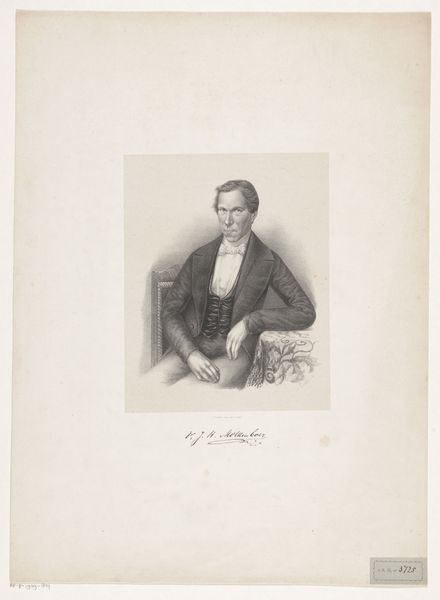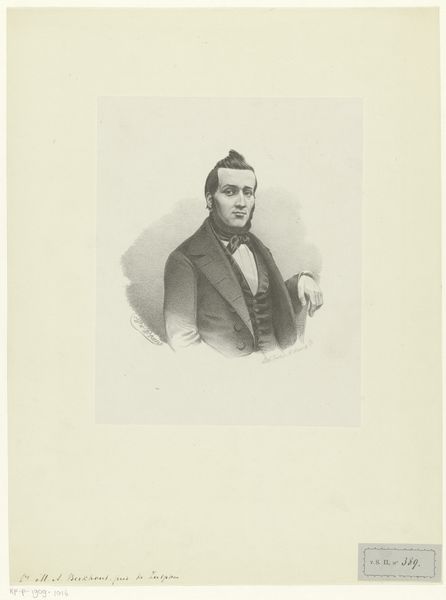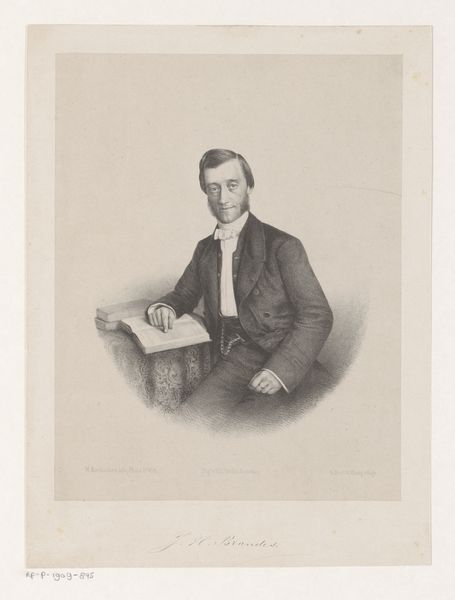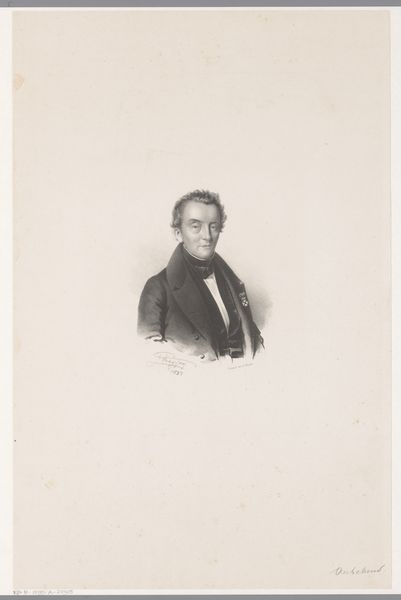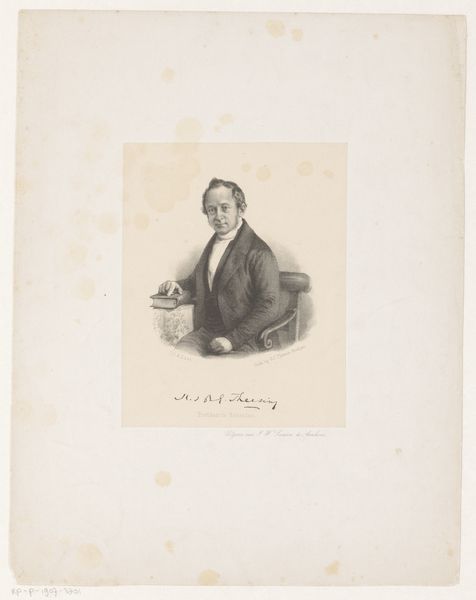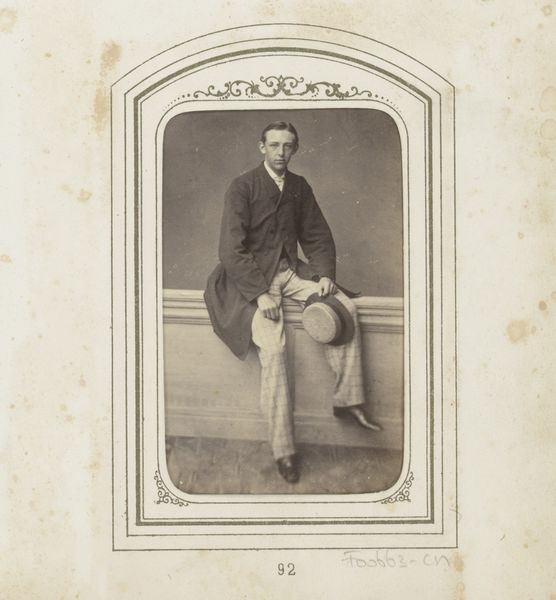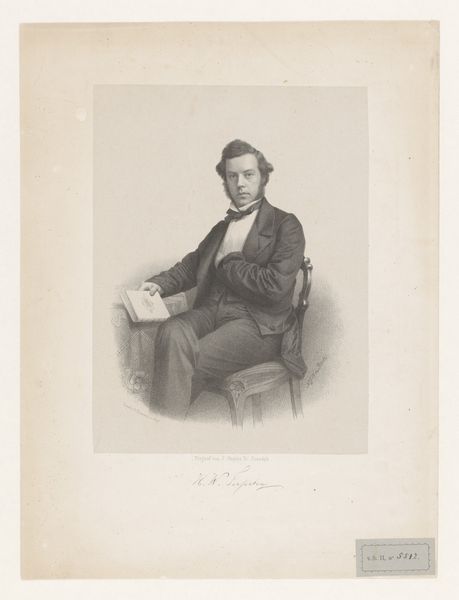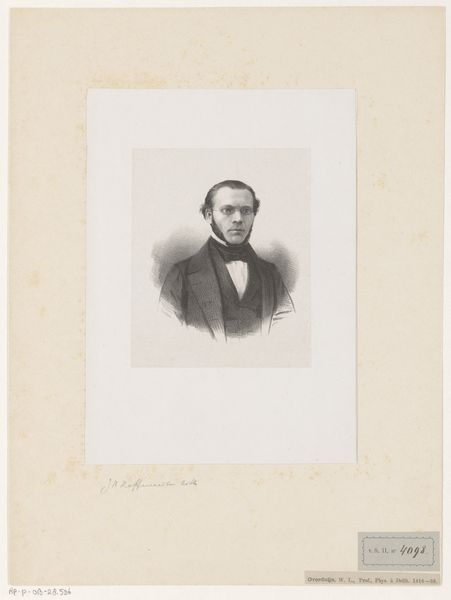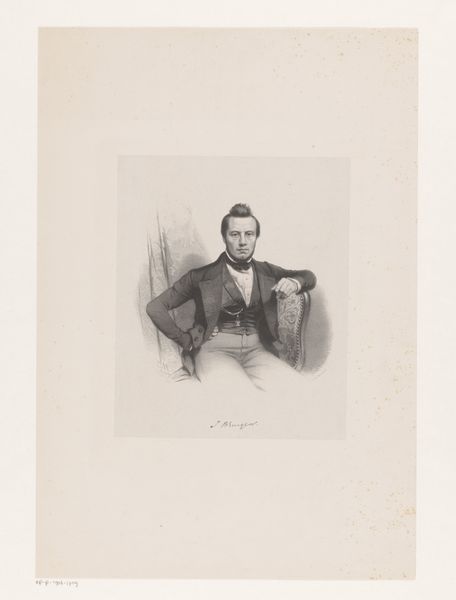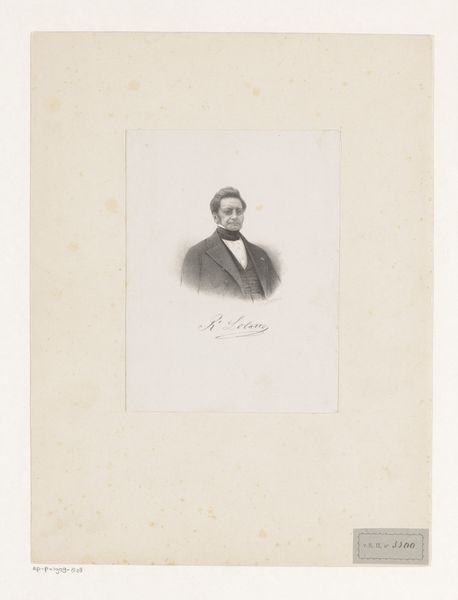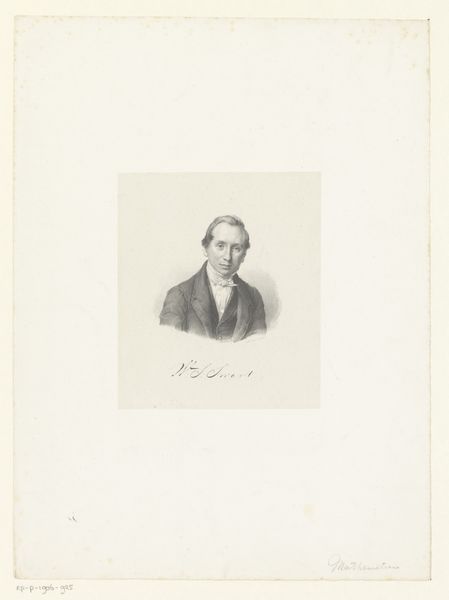
print, paper, graphite
#
portrait
#
toned paper
#
dutch-golden-age
# print
#
paper
#
graphite
#
realism
Dimensions: height 380 mm, width 575 mm
Copyright: Rijks Museum: Open Domain
Curator: Up next, we have a portrait rendered in graphite on toned paper from 1861. The Rijksmuseum holds this representation of Johannes Hendrik Brandes, skillfully created by Matthijs Willem Gerardus Michielsen. Editor: My initial impression is one of quiet introspection. The restricted tonal range creates a very still and focused atmosphere. Curator: That subdued palette reflects the social context. Brandes, born in 1820, was a Dutch theologian and professor of oriental languages. Such men of academia were often depicted in a somber, intellectual light. It was part of constructing their public image. Editor: Notice how Michielsen contrasts the crisp, detailed rendering of the face with the softer treatment of the clothing and book. It almost feels like a deliberate foregrounding of his intellect, as you said, his scholarly image, separating it from the trappings of mere existence. Curator: Exactly. And printmaking allowed for broader dissemination of such imagery. Consider the role portraits played in solidifying social hierarchies. This print would have allowed a wider audience to have "access" to Brandes. Editor: Interesting. For me, the light source, slightly above and to the left, emphasizes the planes of his face and neck creating the effect of carved marble which enhances this feeling of dignity. It leads your eye inexorably to his gaze, a man lost in thought. Curator: That intense focus, perhaps further encouraged a growing sense of national identity among a rising middle class that valued knowledge and learning as critical for advancement. These images played a small part in the national self-fashioning during that period. Editor: Yes, I see that now. Considering both form and socio-political function, it’s clear that it is more than a representation of a man; but an encapsulation of a particular aspiration of his era. Curator: It really shows how an image can be viewed through vastly different lenses, but enrich each other! Editor: Absolutely, the socio-political context informing and enhancing the visual qualities is just as exciting the other way round!
Comments
No comments
Be the first to comment and join the conversation on the ultimate creative platform.
